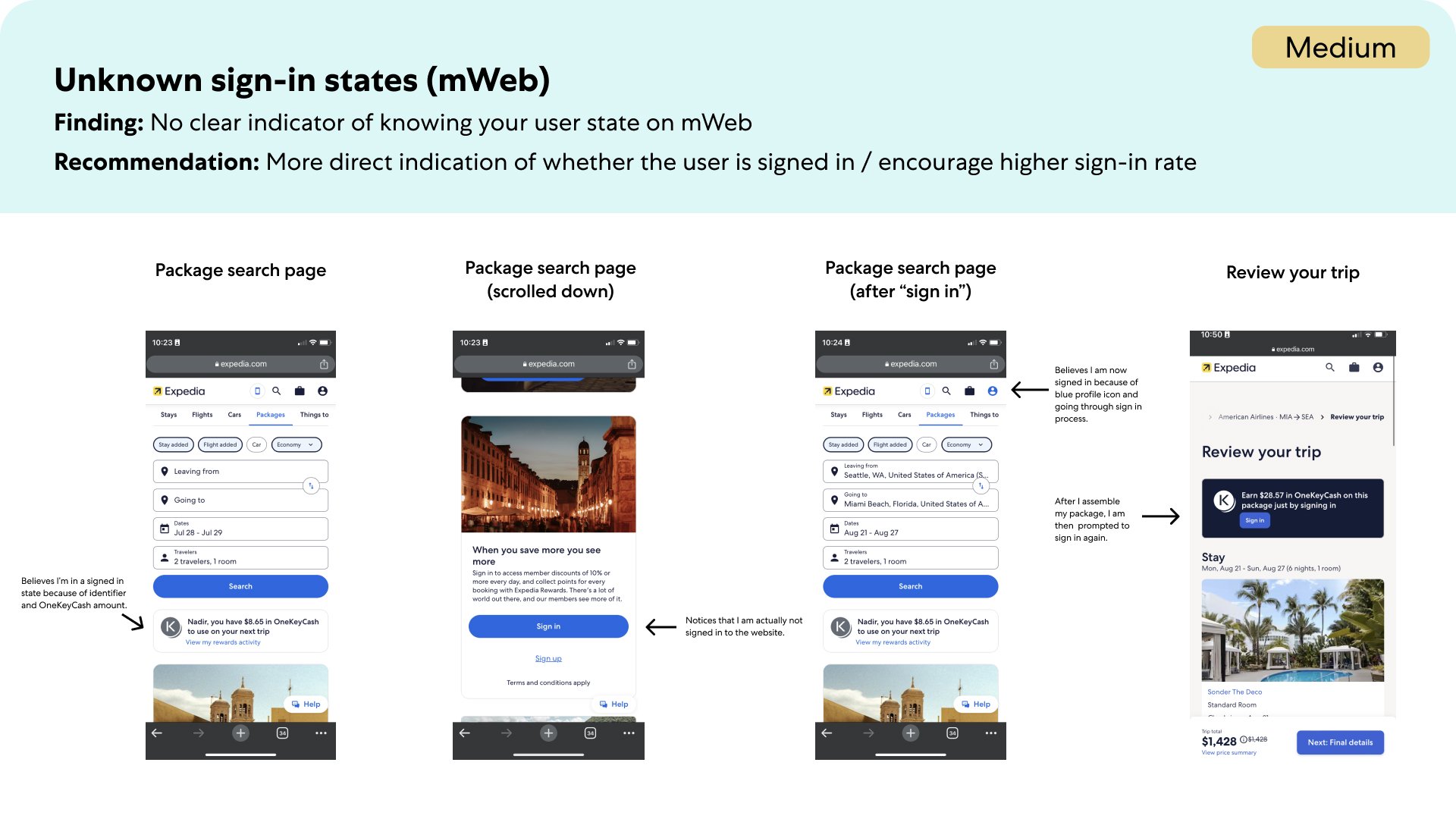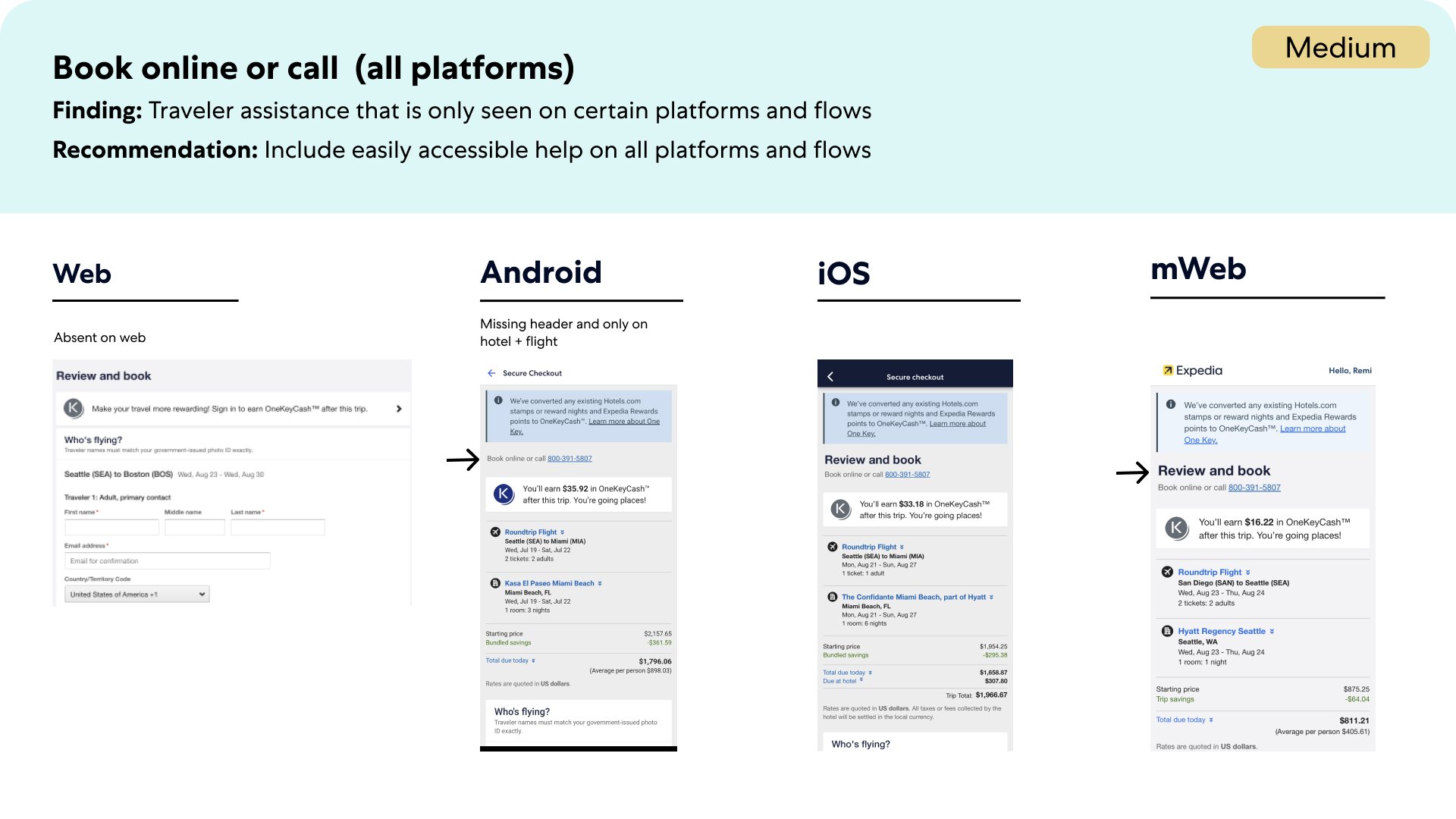Expedia Group
Enhancing the user experience for travelers wanting a packaged deal.
Role: Content Design Intern
Timeline: 10 weeks
Tools: Figma, Excel, and Miro
Project Overview:
As a content design intern, my project was to conduct a content audit on the packages experience. Packages are shopping experiences that allow travelers to save money versus stand-alone shopping.
For the packages content audit, we looked at the content on 4 Platforms and 2 Lines of Business, analyzing the types of content present during the dynamic packages experience.
Weeks 1 & 2
During the first few weeks, I took time to get adjusted to the organization as a whole and understand the inner workings. This is when I researched the different parts of the teams I’d be contributing to. I set up interviews with leadership and stakeholders to get an idea of the goals and scope of the content audit I’d be conducting from an internal/business standpoint.
Week 3
This is when I got down to the nitty-gritty… I entered the discovery phase and went through a ton of research that was conducted and got a sense of what actual customers thought of the package-buying process.
Through this time I was able to: uncover pain points, drop-offs in customer journeys, and content preferences, through the data collected by UX researchers.
Weeks 4 - 6
I started to go through the package flow and grabbed screenshots of each portion of the customer journey (landing page, search, product display, details, checkout, etc). This was one of the most time-consuming parts of the project, there was no way to streamline this portion because I still had to ensure accuracy and check details.
Each flow had around 35-50 screenshots, I did this for two lines of business (Flight + hotel, and flight + hotel + car) for mweb, and the iOS Expedia app. It was totaling around 150 screenshots (can be seen in the second photo in the carousel below).
Once this was done, I was able to start inputting all the content into the Excel spreadsheet. This noted every piece of content such as pages, strings, and components. Including in-depth information like where in the site the information was, and if the content was necessary.
When I was finished the spreadsheet had around 600 rows of information filled out across 10 columns.
This portion of the audit was where I identified inconsistencies and shortcomings in the buying journey for the traveler.
Week 7
To organize the discrepancies, I first placed them into four categories:
Typos - Problems such as punctuation, spelling, and sentence structures
Platform Inconsistencies - Inconsistencies across platforms
Language Inconsistencies - Issues between components and languages within a single platform/package experience, or components and languages
Experience Optimization - Recommendations and suggestions towards a better package user experience
Then placed each finding into a severity level:
Low - Inconsistencies of CTAs and buttons, smaller pricing issues
Medium - Issues that undermine the ability of customers to trust us (typos, awkward sentences)
High - Trademark or legal risk claims, incorrect information, or barriers that inhibit task completion
The goal of the four categories was to show the brand inconsistencies and where the impact on the traveler was. The goal of the severity level was to gauge what we believed based on our time learning the business model and goals of the project.
Weeks 8 & 9
This time was spent refining the final presentation and attending Design Reviews. I presented the content audit in three different content critiques, with various roles present and providing feedback.
From the meetings, I went back and reiterated, described, and clarified a few pieces of information about the process and findings. This included specific insights from the initial research, possible alternatives for redesigns, and defining next steps.
Week 10
I wrapped up my final changes and presented the content audit to over 60+ stakeholders. The project was well-received and greeted with positive feedback.
If I had more time on the project I would have loved to have been able to implement some redesigns for A/B testing or create a framework for this process to be streamlined in the future.






